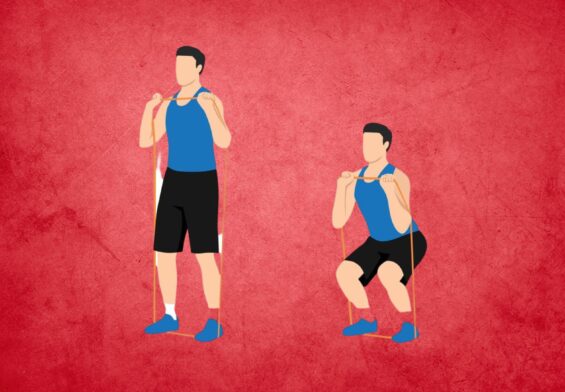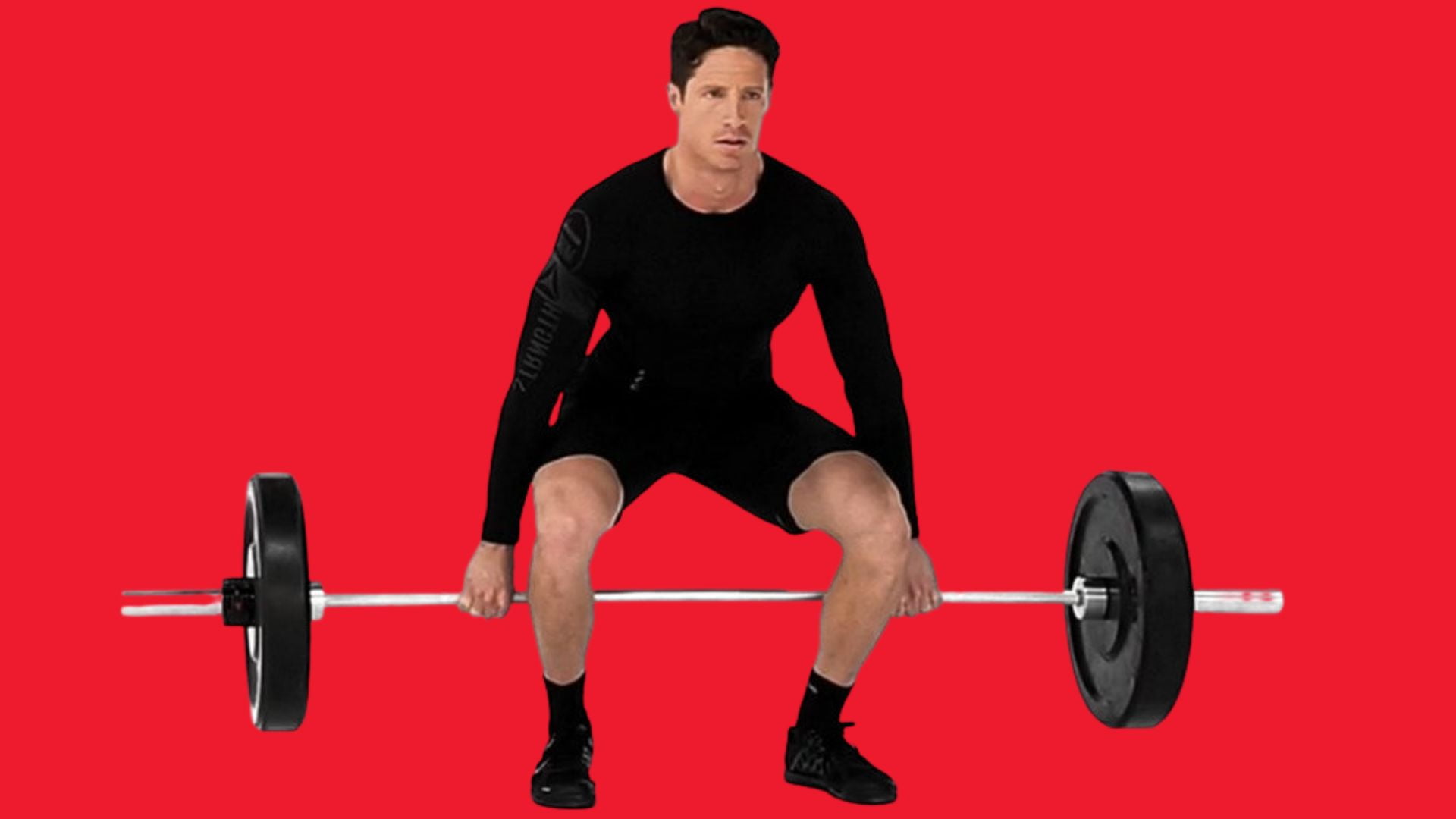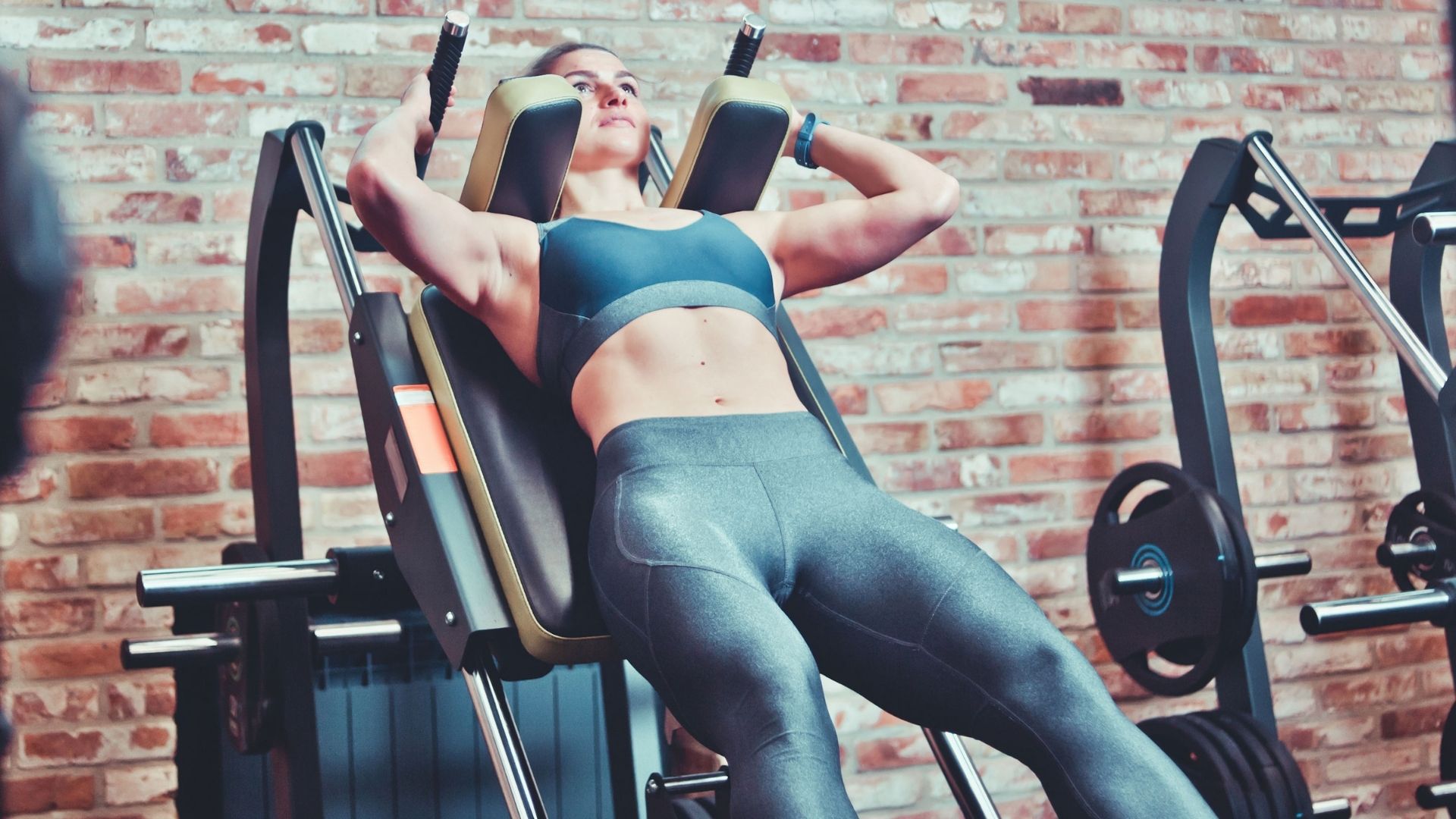
Hack Squat: The Essential Exercise for Strong Quads
Squatting is an essential part of our natural movement.
As babies, we do this from the beginning.
As we get older, we begin to do it in the gym.
Hack Squat is a complex movement that uses many joints and muscles and requires stability to function.
It is very effective in building muscular strength and endurance.
This is one of the best lower-body exercises.
There are many variations and modifications.
Hack squats are a variation of the squat that requires a piece of machinery.
When there are so many squats, you can do.
What is hack squat?
How do you do it?
What’s The Hack Squat?
Hack squats are performed on equipment.
Although the hack squat may look like the leg press (which they are not), don’t confuse the two machines.
The leg press is a way to push the weight plate away from a seated position.
The hack squat is performed by standing on the plates and leaning back on the pads.
The weight is placed on top of your shoulders.
The weight is then pushed into the concentric phase.
Simply stated, the weight is removed from you when you stand up straight.
This is a squat with support from a machine.
It is called a Hack Squat.
Emmanuel Legeard said that Hack Squat’s name derives from the German phrase Hacken Zusammen, which means “heels together.”
This resulted from how Prussian soldiers clicked their heels together when they stood up to pay attention.
What’s the point?
Hack squats are great for strengthening your legs, especially if you’re a beginner at the squat.
The angled machine puts you in a standing position to support the weight and allows you to rely on your legs for movement.
The hack squat is a great way to build your legs, especially your quads.
How Can You Do The Hack Squat?
Although each machine may look different, most hack squat kits function similarly.
Before climbing on the machine, decide how much weight you would like to lift.
The hack squat machine will allow you to lift more weight than a barbell, but it is better to start slow and work your way up.
- Start by placing your feet flat on the plate.
- Then, lean back against the pads to support your back.
- Your feet should be positioned far enough in the front to allow you to squat into a deep squat.
- Your feet should be approximately shoulder-width apart, with your toes slightly inward.
- Your knees may be slightly bent at this stage.
- Grab onto the bars, which will be right by your shoulders.
- You will need to stand first to lift the catch off the machine.
- You may need to release a safety stop at this point.
- However, it all depends on your machine.
- Before you begin the exercise, make sure to read the instructions.
- To get out of this position, squat to the side and bring your hips down so your glutes are parallel to your knees.
- Your weight should be absorbed into your heels.
- Drive back to standing from the bottom of your squat.
- Push with your heels, glutes, and legs.
- Not your knees.
- Do not lock your knees at the top.
- Inhale and continue the movement until you reach the top.
Are There Any People Who Should Not Do Hack Squat?
The hack squat is not recommended for people with lower back or knee pain.
The machine can assist in stabilization, but there will still be a strain on your joints, worsening any existing problems.
What makes the hack squat different from a regular squat?
The hack squat machine is more supportive than squatting with barbells.
It eliminates the need to use your core and other muscles to stabilize the body while you squat.
A traditional squat can be a compound exercise that builds core and lower body strength.
The hack squat is a different exercise.
Hack squats can highlight the quads and the knees because your hips remain in a fixed position.
Hack squats have fewer focus muscles than others.
How To Incorporate Hack Squat Into Your Workout Routine?
The hack squat is an excellent addition to deadlifts or squats.
If you combine it with three to five more leg exercises, you’ll soon notice a more muscular and leaner pair of legs.
Before you start your workout, make sure you are correctly warm.
Do five to ten minutes of moderate-to-high-intensity cardio, followed by dynamic stretching.
Before you add weight, it is vital to keep your joints and legs mobile.
How Does Hack Squat Work?
This movement increases the impact on the upper leg (outer) muscles.
Press your feet together to work on the gluteus maximus, the hip muscles.
The side leg adductor muscles can also be activated if you lift your legs.
Make sure your stomach muscles are vital to ensure your back isn’t injured while moving.
Primary Working Muscles
Quadriceps: Front Leg Muscles
Rectus Femoris: Ilium begins at the anterior part of the pelvis. Patella connects to the upper middle of the kneecap.
Vastus Lateralis: The femur begins at the upper leg bone’s upper outer (relatively to the body) portion. The patella attaches to the upper outer portion of the kneecap.
Vastus Medialis: It connects to the upper part of the patella from the upper part of the femur bone.
Vastus Intermedius: It begins at the upper middle of the femur bone and connects to the upper part of the patella. It lies below the rectus Femoris.
Common Mistakes When Doing Hack Squat
These are the most common errors in hack squat:
Having A Consistent Range Of Motion
To properly apply progressive overload, all reps must be brought down to the same depth.
You can slow down at the bottom or pause at each rep to maintain consistency in your range.
Not Going Too Low
Deep reps can help build quads, but your heels shouldn’t lift off the platform.
It is essential to drop as low as possible while keeping your heels in contact with the platform.
Learn my tips to get deeper.
Too Much Rest At The Top
Lifters often work out all the reps and then take long breaks at the top while keeping their knees locked.
This can make it challenging to compare sets as you will feel the tension shift off your quads if your knees are extended fully.
Which Variations Are Possible?
You can choose from two hack squats to get a completely different experience.
Reverse Hack Squat
You’ll be facing the pads in a reverse hack-squat.
Your chest should be against the back pad and your shoulders under the shoulder pads.
You can continue the same shoulder-width foot position but lower your feet until your thighs meet. Then push your heels through to return to where you started.
This move puts more emphasis on the glutes.
Narrow Hack Squat
You’ll do the same thing as a regular hack set-up for a narrow hack sit.
Instead of placing your feet shoulder-width apart on the ascent, move them closer together.
Keep your heels pressed through the ascent.
This movement places more emphasis on quads.
What If You Would Like To Use Barbells Instead?
The hack squat machine can be used to begin the exercise.
However, you can also use a barbell to perform a hack squat.
This move is slightly more complex.
Your upper body must be strong enough to support sufficient weight.
For beginners, this can be tricky.
How To Do It
- To start, choose a light barbell.
- Keep the barbell about arm’s reach behind you.
- Your hands should be in line with your shoulders.
- Keep your chest high and begin to squat back.
- Stop and allow the barbell to drop down when your thighs meet the ground.
- To return to the original position, push your heels back.
Technique Tips For Hack Squat
These hack squat tips will help you improve your technique:
Try Different Rep Ranges
Hack squats are a compound exercise that uses multiple muscle groups.
You’ll get the most out of the hack squat if you load it in the most favorable range to your goals.
The 3-8 rep range will likely give you the most strength gains.
However, the +8 rep range will give you more hypertrophy.
To Emphasize Your Hamstrings
Stand higher on the platform and extend your knees as you perform the exercise.
This will not allow your knees to travel forward as much as usual, reducing the strain on your quads.
It will also shift it to your hamstrings.
Focus on your glutes with a glute loop and stand tall on the platform.
To avoid collapsing, you must push your knees against the band as you move.
This will make your glutes work overtime.
How To Work Out Safely And Avoid Injury
Before an exercise program, consult your doctor if you have any pre-existing or current health conditions.
To ensure safety and effectiveness, proper exercise technique is crucial.
However, you might need to adjust each exercise depending on your personal needs.
You should choose a weight that allows you to maintain complete control over your body during the exercise.
Pay attention to your body and stop if you feel discomfort or pain.
You will see steady progress in your fitness and increase body strength if you incorporate proper warm-ups and rest into your exercise routine.
Your ability to recover after your workouts will determine your final results.
To allow adequate recovery, you should rest for 24 and 48 hours before returning to the same muscle groups.
Advantages Of Hack Squats
Hack squats can be a great addition to your strength-training program.
Hack Squats Strengthen Your Leg Muscles
Hack squats work the major muscle groups in your lower body, including glutes and adductors.
Good leg strength is essential for other compound exercises like deadlifts or lunges.
Hack Squats can improve your squat form.
Hack squats can help improve your hip mobility and flexibility.
Hack Squats Can Improve Your Posture
Proper form can help you build strength and stability in your upper and lower back while aligning your spine throughout the entire range of motion.
The Hack Squat: Cons
Here are some cons to hack squat:
- Your shoulders may feel sore. It all depends on how heavy you are and the design of the pads.
- Although it does not eliminate spinal loading, it can be used by people with sensitive backs. If this is the case, you should try it before adding weight.
Hack Squat Alternatives
#1 Leg Press
Because there is no spinal compression, the leg press is an excellent alternative to the hack-squat.
The main muscles that are targeted are the quads and glutes.
Like the hack squat, the leg press is machine-based and is also a machine-based exercise.
It works the same muscles as the hack squat and puts no axial loads on the spine.
Additionally, the leg press is less exhausting than the other free-weighted options listed later in this article.
How to do it
- Place your feet on the platform and lie down on the machine.
- Most likely, your stance mirrors your back squat position
- Once you are ready, fully extend your legs and release the safety catches
- Start by bending your knees so that your thighs meet at the bottom.
- To return to your starting position, push the platform away
Pro-Tip
The leg press will likely allow you to lift significantly more weight than the hack squat.
When you first start using this machine, I recommend jumping heavier (50-90lbs per jump).
This will reduce the number of unnecessary sets you’d have to do.
#2 V-Squat
The V-squat is an excellent alternative to the hack squat.
It primarily isolates quads and uses the same motor pattern.
The mechanics of the v-squat are very similar to a hack squat.
It is a machine-based exercise that eliminates the stabilization requirements of a free-weight bench press.
It does a fantastic job of working the quads and the glutes.
However, you will need to do a bit of forwarding trunk lean while moving through the entire range of motion.
The v-squat will allow more abdominal and back work than the hack squat.
How to do it
- Place your feet on the v-squat platform, and assume your usual squat position.
- Make sure your shoulders touch the shoulder pads
- Grab the handles by your shoulders
- Once you are ready, get up and release the stopper
- Bend at the knees to descend
- Once you have reached your desired depth, push it away so you can stand up.
- At the end of your set, engage the stopper to get out of the machine
Pro-Tip
You can adopt a narrower than normal stance and place your feet closer to your platform for a more targeted quad workout.
#3 Barbell Hack Squat
The barbell hack squat is an excellent alternative to the machine-based hack squat.
You will use the barbell to apply the load.
The barbell will require you to bend your knees to balance, but it will also allow you to stand taller.
In turn, your quads do more work.
The barbell hack squat offers almost the same benefits as the hack squat.
It is free-weight, so it will be harder to do.
This means that you will likely need to reduce the weight of the barbell and do a few more exercises to get used to the range.
How to do it
- You would load a barbell for deadlifts.
- Place your feet in front of the bar
- Grab the bar and bend down
- To stand, push the floor away
- The bar will slide down your back as you stand straight up.
- Bend your hips and knees simultaneously to descend
Pro-Tip
To help you find the right bar path, I recommend using a power rack if you have difficulty with this exercise.
Perform a few sets by placing the spotter’s arms at about knee-high height.
You can increase the spotter’s comfort by lowering the bar’s height until the bar is on the ground for each repetition.
It would be similar to a rack deadlift, but you start with the barbell behind.
#4 Goblet Squat
The goblet-squat is similar to the hack squat but uses a dumbbell or kettlebell as an implement.
It’s often used to help lifters progress to higher squat variations (front and back), but the goblet is a good stepping stone for more advanced squats.
Despite not being an alternative to the hack, the joint angles in the goblet-squat put a lot of demand on the glutes and quads.
How to do it
- Hold a dumbbell vertically by grasping one.
- Your palms should support the dumbbell’s upper side.
- Always keep the dumbbell close by your chest.
- To descend, simultaneously break at the hips and knees.
- As you get to the bottom, keep your balance in your midfoot
- Think about pushing the floor away if you want to stand.
- Especially as you ascend, keep your balance throughout the movement.
Pro-Tip
Sore wrists are a common complaint about the goblet-squat. To prevent this, keep your elbows close to your body. This will allow you to support the dumbbell more effectively and reduce the strain on your wrist joints.
#5 Landmine Squat
The landmine squat can be used as a substitute for the hack because it allows you to stay upright and load your quads efficiently.
The landmine squat can be used when the dumbbell for the goblet squat becomes too heavy to hold.
The landmine squat allows you to lift a portion of your barbell weight by carrying the bar.
This makes it easier to load.
You can still place the unloaded barbell sideways in a corner for this exercise.
However, a landmine attachment will keep your walls from chewing up by the barbell as it moves.
How to do it
- You can place a barbell into the landmine attachment or wedge one end in a corner.
- You can add weight to the other end of the barbell.
- It’s better to limit the size of your plates to 25 lbs.
- One smooth motion: Lift the bar off the ground to position it in front of you.
- Start your descent by pointing your feet slightly forward, so your torso is slightly in front.
- When you have reached the proper depth, get up.
Pro-Tip
You can landmine squat by adjusting your posture slightly and allowing your torso to reach the bar.
This position allows you to avoid shifting too much weight onto your heels and reduce the feeling of sinking backward as you squat.
#6 Belt Squat
You can use the belt squat to substitute for the hack-squat exercise.
It mimics the position of the hack squat, with a straight torso and forward knees.
There are many variations of the belt squat.
It all depends on what equipment you have.
A squat belt machine is the default option.
You can also use a landmine attachment or a cable machine.
Or you could just use boxes or a dip belt.
Any variations mentioned above can substitute for the hack squat, provided you can move in a baritone range without the plates touching the floor.
How to do it
- Wear a Dip Belt and attach it to the belt-squat machine with a carabiner.
- You might need to kneel for this.
- Place your feet in the preferred position without lifting the plates
- Place your hands gently on the rails, and then stand fully.
- You can continue to descend without stopping.
- To keep your balance, use the handrails to help you stay balanced. Bend at your knees
- Once you have reached the proper depth, push the platform away.
Pro-Tip
You can target your quads more.
You can target your quads even more by wearing squat shoes with a heel.
#7 Front Squat
The front squat, a variation of a free-weight squat that emphasizes the quads and is an excellent hack squat option, can be done without any weight.
During the front squat, the barbell should be placed in front of the shoulders.
The lifter must push their knees forward to remain upright to keep the bar in this position.
This is similar to a hack squat.
Although the front squat places a lot of strain on the quads/glutes, it will work your abdominals/back muscles more than the hack.
How to do it
- Place the bar at shoulder height using a rack
- Place the bar in the crook on your shoulder
- Your hands should be just above your shoulders.
- Try to wrap your fingers around the bar by placing your fingers in the middle of the bar.
- Push your elbows upwards so your triceps touch the floor.
- Lift the bar off the rack by standing up
- Now, take a few steps back and squat.
- While bending at your knees, try to “sit between the thighs.”
- When you have reached your desired depth, push the floor aside to get up
Pro-Tip
One common complaint about the front squat position is that it can be awkward on the wrists and possibly lead to pain.
If your wrist feels sore while front squatting, try placing your tips on the bar.
You can also cross your arms and grab the barbell with an overhead grip rather than an underhand one.
#8 Safety Bar Squat
The safety bar squat uses a specially designed barbell that allows the lifter to target the same muscle groups as the hack.
The safety bar squat is similar to the hack squat.
It allows you to keep your torso upright throughout the movement.
To keep your balance, you must move your knees slightly forward if your torso is more vertical.
How to do it
- Place the bar at shoulder height using a rack
- With the foam, place the barbell on your back
- Keep your elbows in your sides and grab the handles.
- To clear the hooks, stand up and take a few steps back
- To descend, bend simultaneously at your hips and knees.
- Once you have reached the proper depth, place your feet on the floor and return to standing.
Pro-Tip
The safety bar squat can be used as a substitute for the hack, but it is also more gentle on the back than traditional back squats.
This is due to the higher trunk angle.
It is an excellent hack squat option for people who have suffered from a back injury in the past or present.
#9 Hatfield Squat
Hatfield squat targets quads and glutes while maintaining a more vertical body.
It is an effective hack squat option.
The Hatfield squat is similar to the safety bar squat.
You can use your hands to help you do the Hatfield squat.
This will allow you to stand straighter, work your quads and have your glutes help you stand.
How to do it
- Place the bar at shoulder height using a rack
- With the foam, place the barbell on your back
- To clear the hooks, stand up and take a few steps back
- Just above your hips, place your hands on the uprights.
- To descend, bend simultaneously at your hips and knees.
- Once you have reached the proper depth, place your feet on the floor and return to standing.
- Use your hands to lift your arms slightly to assist you in the ascent.
Pro-Tip
Different lifters may prefer different hand supports in the Hatfield Squat.
Try balancing your hands between the rack’s uprights and the bar or band in front of your face.
Hack Squats vs. Regular Squats
The back squat is probably the most effective full-body exercise with deadlifts.
The Hack Squat is a variation that stimulates many of the same benefits.
Still, it’s not as efficient as adequately performed Back Squat.
Leg Press vs. Hack Squat
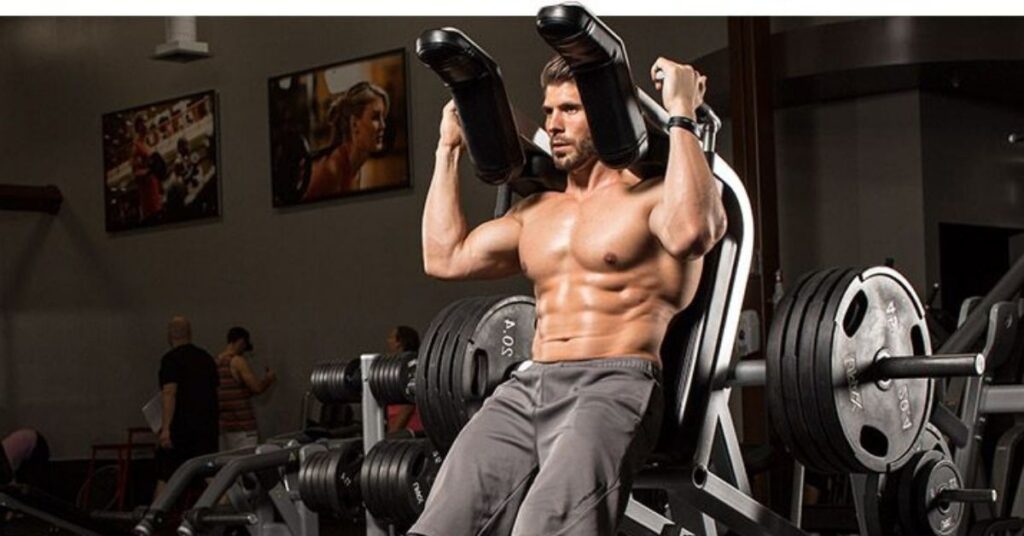
The HS is more effective for preparing for the Back squat.
It will also build greater power and jump performance.
Leg presses are the best option for those who want to incorporate various exercises into their daily routine.
Is Hack Squat Effective?

Hack squats machines can help in some specific cases when exercisers want to accomplish something.
A piece of equipment can be judged by its availability in a gym.
A hack squat machine is not common in most gyms, especially small or medium.
This tells you how important it is to your workout routine.
It’s not a must-do exercise.
It doesn’t have to be your first choice.
Leg day can be used to include the hack squat or dumbbell squat.
You can do it your way.
Hussle is a firm believer in this.
Is Hack Squat So Hard?
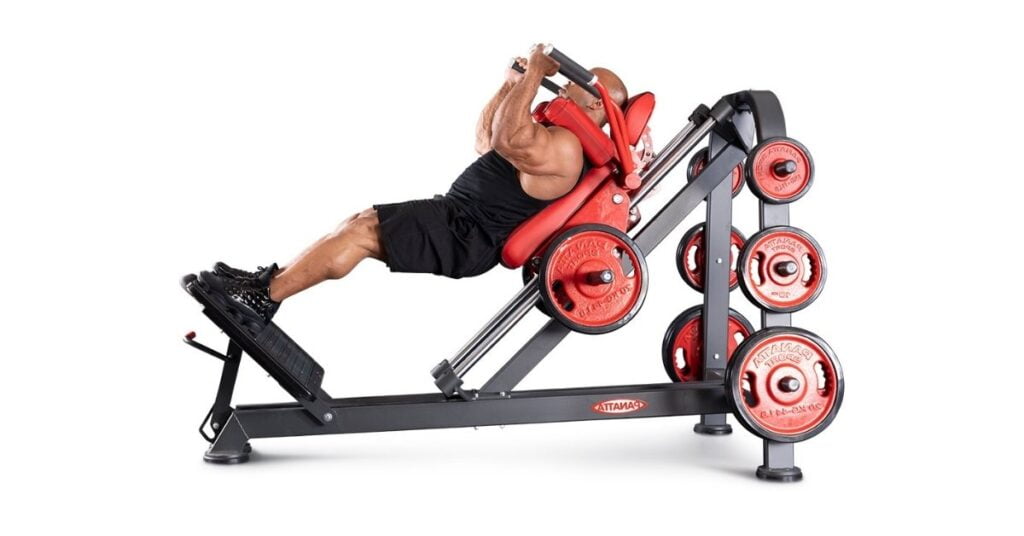
Hack Squats can be difficult because of the intense work required to strengthen your quads.
The HS can develop the glutes as well as the hamstrings.
However, the movement form puts a lot of strain on the quads.
Instead of moving freely to place yourself in a more robust overall location, your torso is locked in a series.
Is Hack Squat Bad For Knees?
It’s okay for your knees if you have no joint or mobility problems.
Last Words
Hack squats can be substituted for the hack squat by using a similar movement pattern or activating similar muscle groups, especially the quads (and glutes).
You can use any of these exercises with the hack squat to enhance your training program if done with intention.





